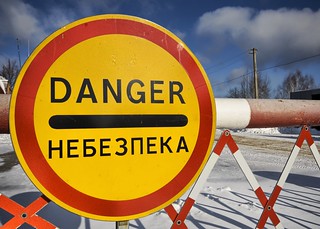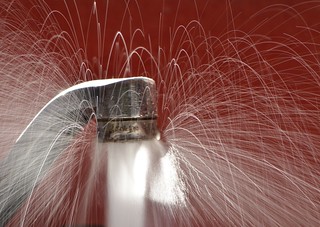It’s been 28 years since the April 1986 explosion of the #4 reactor at the Chernobyl Nuclear Power Station in Ukraine. The temporary concrete and steel sarcophagus containing the destroyed reactor, built with the assistance of nearly half-a-million Soviet workers known as “liquidators,” is showing signs of age, as well as signs of its hasty construction. A large multinational project dubbed New Safe Confinement is currently underway, in which a huge steel truss, covered in stainless steel plate, will cover a span 250 feet wide and 850 feet long, to contain the existing sarcophagus.
Containing a Dirty Bomb
The intent of this $1.5 billion engineering and construction effort is to protect the environment against the potential collapse of the deteriorating structure--which, if it were to occur, could send radioactive dust and debris up into the atmosphere like a gigantic dirty bomb. The project is intended to be completed in 2017, which is more than 30 years after the original accident. The time frame for nuclear contamination to naturally reduce through radioactive decay is often difficult to fathom on a human timescale—while for some components, such as the more common cesium isotopes, half-lives are in the 30 year timeframe. Other radioactive components which litter the uninhabitable 1,000 square mile “exclusion zone” around the plant have half-lives marked in the many thousands of years. Estimates for when the area will be re-inhabitable range from the hundreds of years, to tens of thousands of years. Regardless of the definitive timeline, it is fair to say that the accident at Chernobyl certainly will be a legacy to deal with for many, many future generations.
Comparing the Costs
We are in time of increasing awareness of rapid, dire anthropogenic climactic changes. The recent IPCC (Intergovernmental Panel on Climate Change) 5th Report makes clear that swift and significant action is required in reducing greenhouse gas emissions in order to mitigate some of the worst potential climate outcomes. In this light, it is tempting to look at the reduced carbon impact encumbered by the full lifecycle of nuclear power as a good alternative to fossil fuel-based energy sources. And when we do look at the overall cost to the environment and to human health, the impact to the regions around Chernobyl and, more recently, Fukashima in Japan, will likely be far less than the costs that will be incurred if we don’t make a change in Green House Gas emissions quickly.
It may be that that the risks associated with possibly better engineered nuclear power plants may be less than that which we face from a warming planet. But I argue this is a false choice. Nuclear power may have its place, but from an economic standpoint and a potential risk standpoint, plowing investment into renewables and efficiency is something we can do today—much faster and cheaper than we can ever think of constructing new nuclear power capacity, even if they do have a role in a future energy mix.
For further reading:
NYT Editorial: Right Lessons from Chernobyl
Wikipedia: New Safe Confinement
IPCC Report V5 Summary for Policymakers





